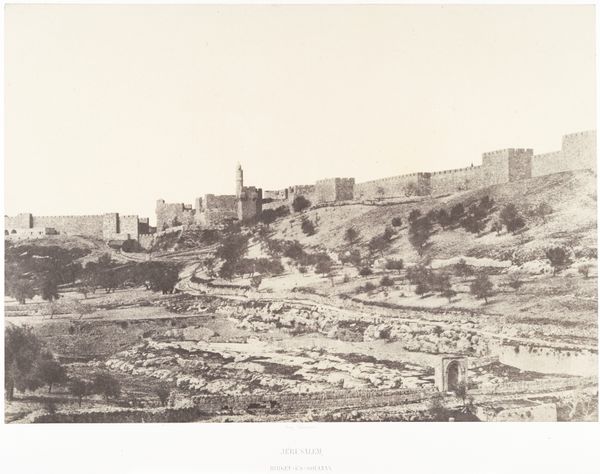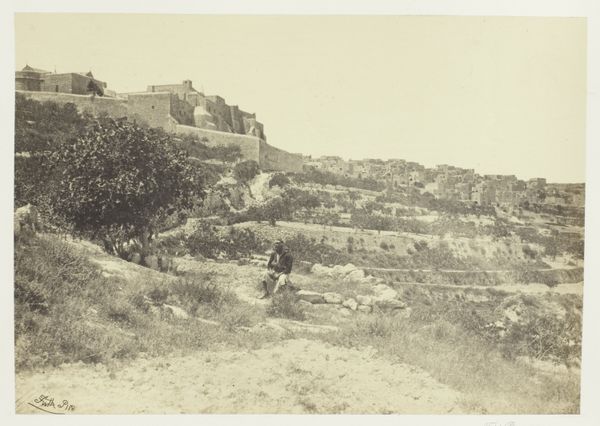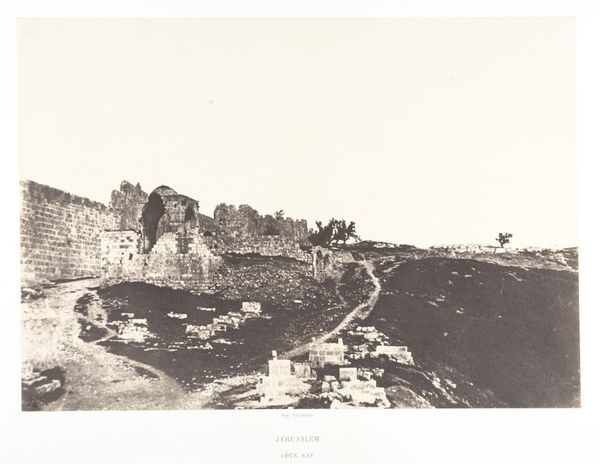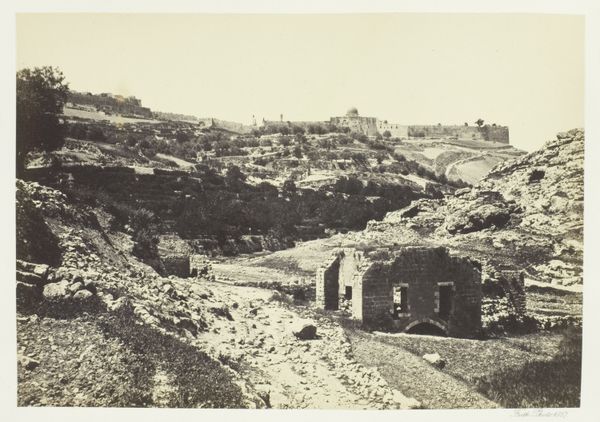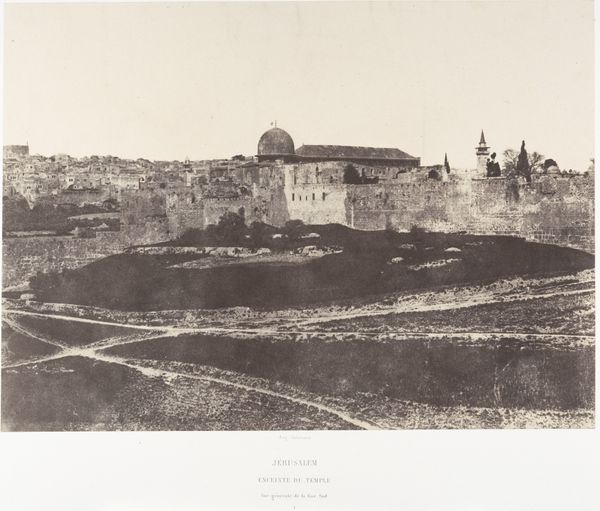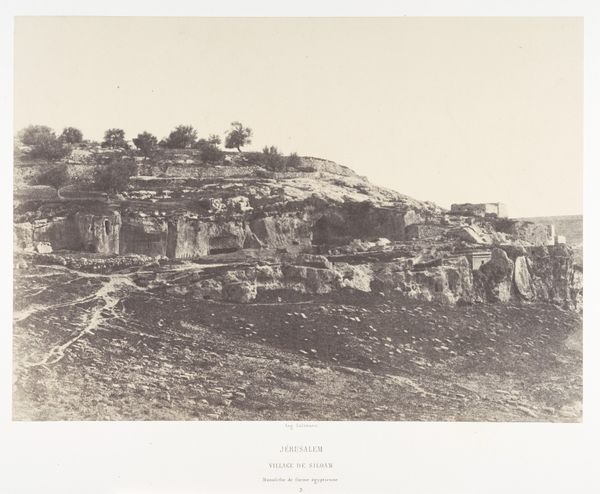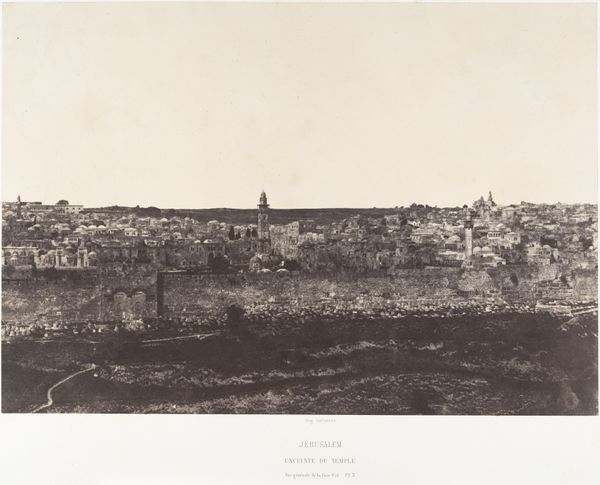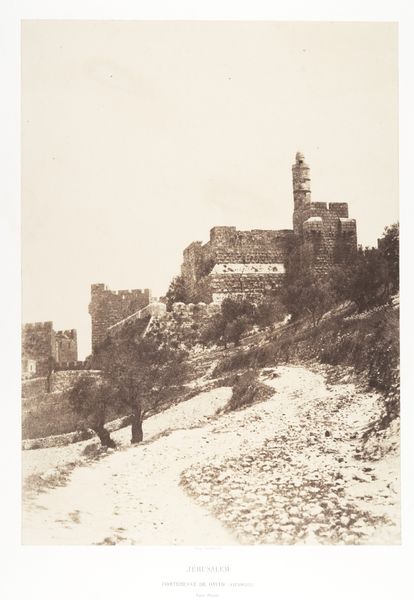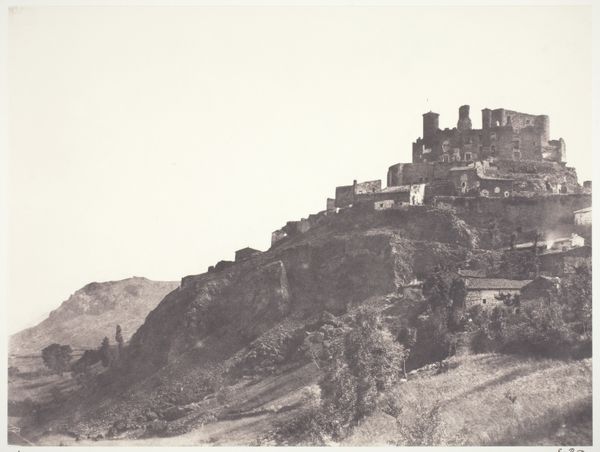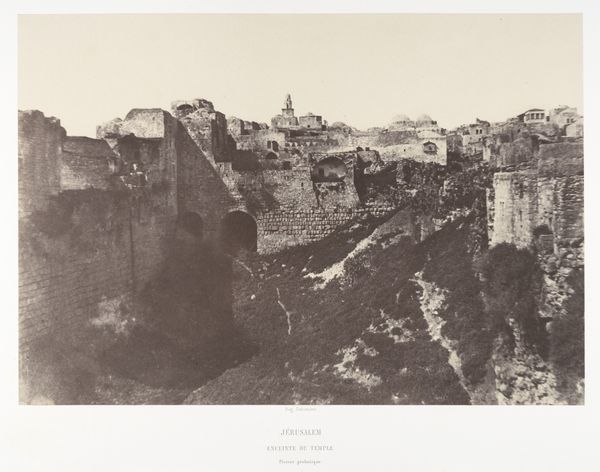
photography, albumen-print, architecture
#
16_19th-century
#
landscape
#
photography
#
orientalism
#
albumen-print
#
architecture
Dimensions: Image: 22.8 x 32.6 cm (9 x 12 13/16 in.) Mount: 45.1 x 60.1 cm (17 3/4 x 23 11/16 in.)
Copyright: Public Domain
Curator: It feels austere, almost bleached. Editor: Indeed. This is Auguste Salzmann's "Jerusalem, Northern Side of Jerusalem," a photograph, specifically an albumen print, dating from the mid-1850s. Salzmann's work here in Jerusalem documents a site of immense religious and political significance during a period of growing colonial interest in the region. Curator: That muted palette emphasizes the topography. Look at how the light renders the wall, stark against the rising landscape and sky. There's a flattening effect, a stripping away of… vibrancy. Editor: I would say it's the detail, not the vibrancy, that is reduced by this artistic decision. Remember, photography at this time was often seen as purely objective. Salzmann aimed to provide factual architectural documentation and refute the arguments that certain architectural features had been renovated in the early Christian era; rather he claimed they dated back to the Temple of Solomon, and had merely been repaired, not replaced. The Orientalist style here is quite powerful. Curator: Absolutely, there’s a palpable sense of distance, both physical and perhaps ideological. He has effectively highlighted what I see as contrasts by muting all the tones into nearly monochrome: permanence and transience, the natural world and the built environment, light and shadow, they are made ambiguous by these decisions. Editor: The way the light falls certainly speaks volumes. However, I would argue that this "ambiguity" reinforces the notion of the “Orient” as a site of mystery for European viewers at the time. The emptiness within the frame, the suggestion of biblical times; Salzmann captures it brilliantly through this interplay. Curator: I can appreciate that tension, this duality embedded in his presentation. It feels charged, knowing the complexities of the site itself and the historical moment he chose to document it. The Orientalist artform also helps solidify his European viewpoint, for an intended European audience, I can feel how that lens has been manipulated to his, and the region's detriment. Editor: Precisely. Thinking of it from that socio-political vantage point provides essential context that would have escaped the attention of viewers at the time of creation. So much in one single print! Curator: A fruitful expedition through form, function, and historical circumstance. Editor: Couldn't agree more. Always great to discuss artwork with you.
Comments
No comments
Be the first to comment and join the conversation on the ultimate creative platform.
